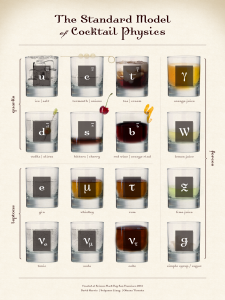For an explanation of this project, read here.
When Rudy Giuliani ran for mayor of New York City in 1993, he campaigned on a platform of bringing down crime and making the city safe again. Rudy Giuliani never misses an opportunity to remind people about his track record in fighting crime as mayor of New York City from 1994 to 2001. For decades, researchers have known that lead poisoning lowers children’s IQs and puts them at risk for severe learning disabilities and more impulsive, sometimes violent behavior. The steep drop in crime in America is one of the most noteworthy sociological trends of the last twenty years. Sandy Banks notes today that crime rates in Los Angeles are way, way down. In hundreds of neighborhoods across the United States, children are living and playing near sites where factories once spewed lead and other toxic metal particles into the air. One obvious question about my story on the link between lead poisoning and violent crime is why I focus so heavily on gasoline lead. If you’re a science or math geek like me, you can’t help but like Nate Silver. Skywatchers may be in for a rare treat in 2013 — a newly discovered comet is expected to pass very close to the sun, putting on what could be the celestial show of a century. A comet blazing toward Earth could outshine the full moon when it passes by at the end of next year – if it survives its close encounter with the sun. At the moment it is a faint object, visible only in sophisticated telescopes as a point of light moving slowly against the background stars. Today, the newfound comet seen above is just a tiny dot in the sky beyond Jupiter. 2013 is looking to be a promising year for potential naked-eye comets, as a new comet has been discovered that will likely skirt close to the Sun, and could provide a stunning display late next year. A new comet has been discovered that is predicted to blaze incredibly brilliantly in the skies during late 2013. A newly discovered comet has the potential to put on a dazzling celestial display late next year, when it will be so bright you may be able to see it briefly in the daytime sky. Within days after a new comet is first discovered, astronomers can tell you exactly what its path through the solar system will look like. There is almost a year to go before Comet Ison reaches the inner solar system, yet excitement is already running high. The Mayan calendar turned out to be a joke and the Twilight Zone marathon is over. There were some great skywatching events visible even from the brightly lit city of Houston last year — most notably a rare, partial solar eclipse. Next year’s most eagerly awaited shows in the skies above might not happen — but that’s exactly what makes them so eagerly awaited. A newly discovered comet from the farthest reaches of the solar system could become a sky spectacle in 2013, astronomers say. As 2012 comes to a close, some might wonder what is looming sky-wise for 2013. Astronomy forums are buzzing with speculation about newly-discovered Comet C/2012 S1 (ISON). Nine in 10 internet users in the United States turn to search engines to find information (1), and 60% of the U.S. public seeking information about specific scientific issues lists the Internet as their primary source of information (2). A new obstacle to scientific literacy may be emerging, according to a paper in the journal Science by two University of Wisconsin-Madison researchers. People who read newspaper and magazine reports on science “may be influenced as much by the comments at the end of the story as they are by the report itself,” a study by University of Wisconsin-Madison researchers says. A science-inclined audience and wide array of communications tools make the Internet an excellent opportunity for scientists hoping to share their research with the world.
